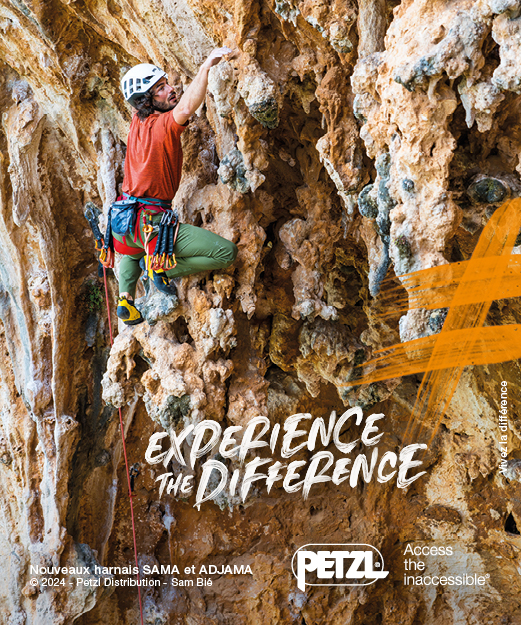Cardio for Climbing – Is it Worth It?

Depending on who you talk to, activities like running and cycling are either great forms of climbing cross training, a waste of time from a climbing perspective, or, at worst, detrimental to climbing performance. Because this training issue seems to flair up peoples’ passions more than any other, the question of whether or not cardio training is good for climbing is often not dealt with in a scientific way.
To help further settle this debate, here’s an article by coach and trainer Seiji Ishii that attempts to tackle this issue from a scientific perspective rather than relying on anecdotal evidence and peoples’ passionate opinions.
The Debate
One of the raging and ongoing debates in rock climbing training circles is whether to incorporate cardiovascular exercise. The energy demands, possible weight gain due to storing muscle glycogen/increased plasma volume/muscle growth and potential for overuse injuries are touted as reasons to omit activities like running and cycling. On the other hand, proponents of such exercise point to overall health and wellness benefits, weight management, and simply the outlet that these activities can provide.
But, what if running or other forms of aerobic exercise could have a direct and beneficial effect on the muscles used for rock climbing?
I have personally experienced both ends of this debate. I have experimented with aerobic activities both the day before and the day of climbing and have definitely felt the energy spent detracted from my performance. Cycling, for me, also adds muscle weight below the waist. On the flip side, I have felt that during times of high aerobic fitness, I recover better between efforts and arduous approaches don’t ruin my climbing day. I have researched the anecdotal evidence presented by other climbing specific trainers and high performance climbers and have found the majority feel it is best to leave out aerobic training if the ultimate goal is advancing through the climbing grades. I wanted to bookend those findings with actual scientific data.

What Science Says for Climbing Muscles
Fortunately, changes in muscle blood vessels due to exercise has a fair amount of recent research. Blood pressure regulation and the proposed benefit of nitrate supplementation (such as beet juice) on exercise performance being the main driving forces. Serendipitously, some studies have actually used forearm blood flow to ferret out results, presumably due to ease of access and manipulation of these vessels.
The benefits of regular aerobic exercise on the blood vessels of the muscles involved is well documented: the increased mechanical stresses that aerobic exercise exerts on the blood vessels decreases the vessel wall thickness and increases the size of the vessel opening. Essentially the “pipe” becomes more elastic and the pipe size increases. Both changes allow freer blood flow to the exercising muscles while easing the amount of work the heart does to provide this flow. These vessel changes have the side benefit of lowering blood pressure at rest.
However, what is not so documented is if these effects also happen in the non-working muscles. In other words, will running or cycling help improve blood flow in the upper body, and for climbers in particular, the forearms?

What about climbers forearms ?
Several research studies say “yes.” Aerobic exercise that utilizes only the legs has been shown numerous times to improve blood flow in the major arteries that feed the arms and to the smaller blood vessels that directly feed the forearm muscles. The same changes that occur in the blood vessels used in the working muscles have been found to happen in the vessels of non-working muscles. Ultimately, this is due to the increased mechanical stresses placed on blood vessels throughout the body due to the high cardiac and blood flow demands produced by the active leg muscles.
Locally at the forearm level, some of this increased stress can also be attributed to constriction of the blood vessels in this area to shunt more blood to the working muscles of the lower body. There is also an added stress to the vessels in the arms from increasing surface blood flow to dissipate rising body heat.
Additionally, the blood vessel changes discussed so far are triggered by the increased physical stresses of cardiovascular training. Blood vessel dynamics are also improved by chemical signals sent out by the body during aerobic exercise. And these factors may also play a part in adapting forearm vessels for increased blood flow. As a result, the beneficial changes occurring to the blood vessels of the arms in response to consistent aerobic use of the legs logically improves the ability to deliver oxygen and fuel sources to the muscles used during climbing.

What Science Says for The Brain
Studies have also shown that these advantageous vessel adaptations occur in the brain while cardio training. This is an angle that never gets any attention. But it could possibly be a factor in sports that rely heavily on mental capacities, like rock climbing. Aside from general cerebral health improvements gained through regular aerobic exercise (decrease in likelihood of strokes and possible lowering of Alzheimer’s risk among others), increased cerebral blood flow has been proven to improve cognitive function. In addition, the mentally/hormonally triggered mood lifting is the primary reason of aerobic activity for many. However, it is interesting to note that the increased cerebral blood flow triggered by exercise is limited to aerobic outputs at 60% of VO2max or less.
Conclusions? Cardio for climbing : is it worth it ?
Improved blood flow to muscles used in climbing, improved cognitive function all the time, general health benefits for body and brain, the enjoyment and mood improving factors of cardio training… Do these potential benefits outweigh the possible and often quoted negatives to rock climbing performance? It’s hard to definitively say from a scientific perspective. Because it is very difficult to quantify the endless factors in a rock climbing specific study centered around aerobic conditioning.
Ultimately though, it is common for athletes to be ahead of the lab, sharing subjective benefits for a long time, only to be proven later by hard science. Experiment on yourself, allow enough time to adapt and collect enough “data”. And you might be pleasantly surprised by the outcome either way.
References
Padilla, J., Simmons, G. H., Bender, S. B., Arce-Esquivel, A. A., Whyte, J. J., & Laughlin, M. H. (2011, June 13). Vascular Effects of Exercise: Endothelial Adaptations Beyond Active Muscle Beds. Physiology, 26(3), 132-145.








